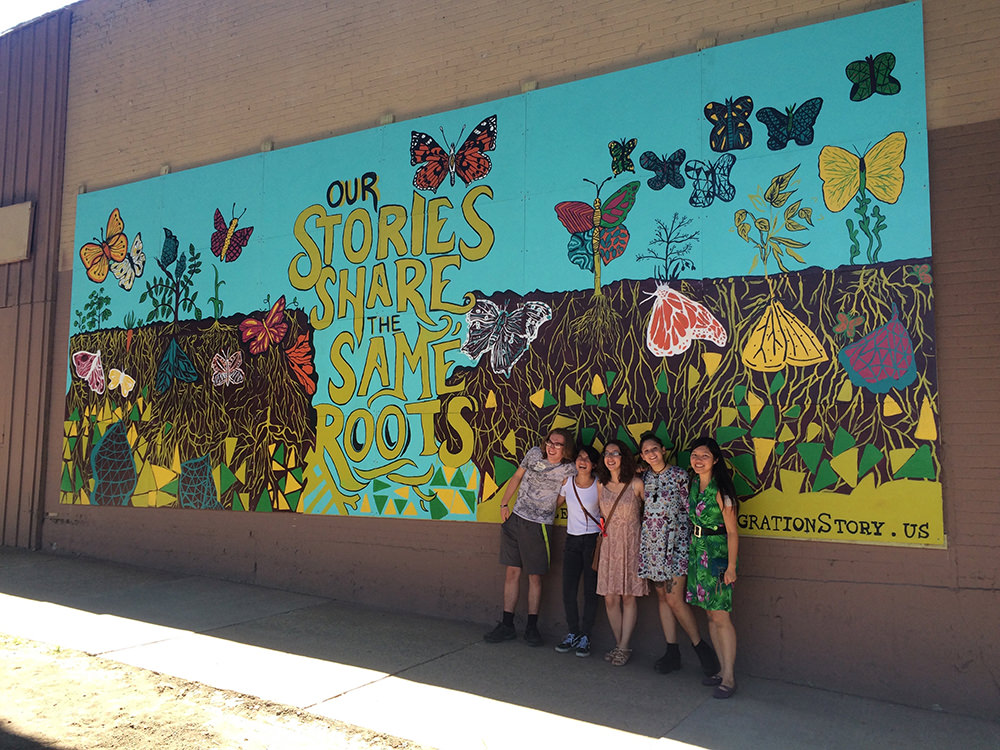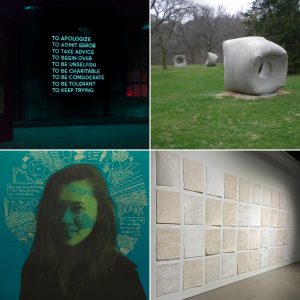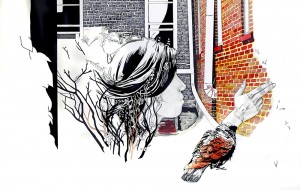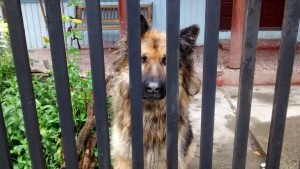It’s been a really good summer, in many ways. Full of laughter and play. Weekend trips. Camping. Outdoor excursions and inside jokes. Crackling fires. Summer pies.

At the same time, it has been an emotionally tumultuous year–for lots of us, I imagine. Maybe election years are always this way, and there’s a lot at stake with this one. There’s a saying, that there are decades where weeks happen, and weeks where decades happen, which seems appropriate for this event-heavy, tragedy-aware year. As an artist, I feel grateful to have a skill and medium through which I can contend with and give a voice to heavy issues–personal, social, political. I’m also admittedly anxious about the responsibility of doing hard topics justice.
It’s been a busy summer, work-wise. I’m excited to share one of the projects I’ve completed in the last couple months, my first mural, a collaborative, public project with the students of Escuela Verde, Artists Working in Education, and fellow artist Gabriela Riveros.

To give some background on how this all got started, Escuela Verde is a public charter school in Milwaukee’s neighborhood of Silver City that uses a project-based learning model to emphasize sustainability, student-led learning, and restorative justice. They partnered with the nonprofit, Artists Working in Education, to use public art as a way to activate and enhance a public space and to discuss community concerns.
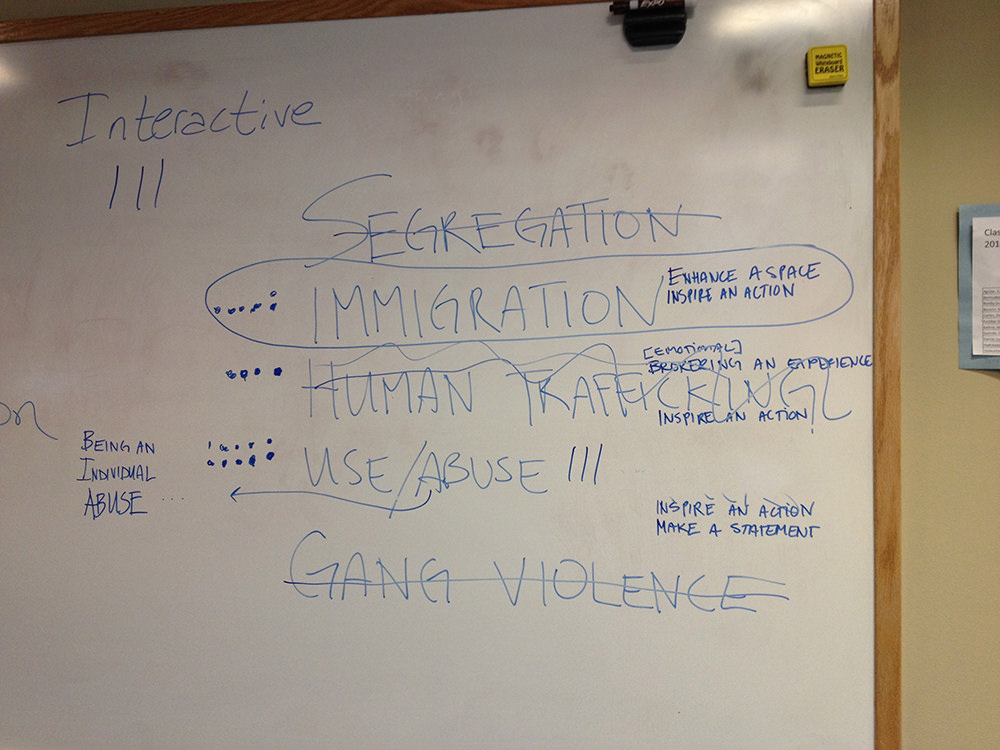
The students chose to focus on the topic of immigration. This is a salient topic, for the neighborhood, the students, and our political climate. Silver City is home to multiple immigrant populations, and many of the students also come from immigrant families that are affected by our current policies.
It was at this point that A.W.E. put out a call for artists. I got the chance to interview with the organizers, then with the students, and was selected as the lead artist for this project. (Those of you who attended my talk at DreamBank in the spring may remember this small moment of foreshadowing.)
A.W.E. connected me with the very talented illustrator, Gabriela Riveros, and I couldn’t have asked for somebody better to team up with (seriously, check out her site; she’s got major skill and major drive). We started working together in April, the outset of two months of workshops with the students and staff. At this point, we had a topic, and were ready to visit the space available to us.

We didn’t have any imagery in mind yet, but we had a vision of what we needed to accomplish, and some of the problems we needed to address. The building owner, Gil, told us about the tagging problems. This part of the block is isolated and doesn’t get a lot of foot traffic or use. The back of the building is isolated, faces the bike path and railroad, and is easy to get to, so the building gets tagged, and the city requires Gil to clean the graffiti up. Community members shared that people often speed through this part of the neighborhood, which is dangerous, since it’s very close to homes and to a school. So how could we use public art to reactivate a neglected space, to deter tagging, to get people to slow down, to engage an important community conversation?
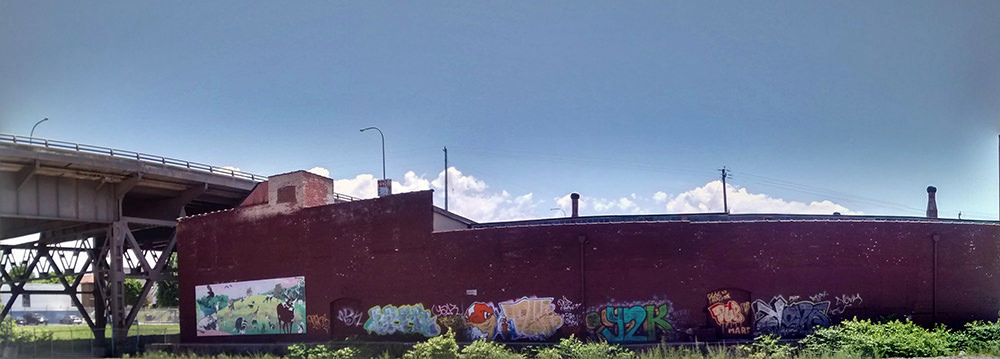
In our workshops, we researched and discussed the role and effects of immigration, collected classmates’ and neighbors’ immigration stories, and identified patterns in the migration stories we shared. Because many of our students are Latinx and Hispanic, many of our earlier dialogues focused on the Mexican-US border. But the “aha” moments in the classroom came as we collected and shared one another’s stories. Our students of Irish descent talked about their families being denied at Ellis Island and going instead to Canada, to cross the border into Montana. Some of our students got to attend meetings with the neighborhood association. Neighbors loved our idea for the mural, and also said they hoped to see something that was inclusive of all the different groups that live, work, and run businesses in the area.
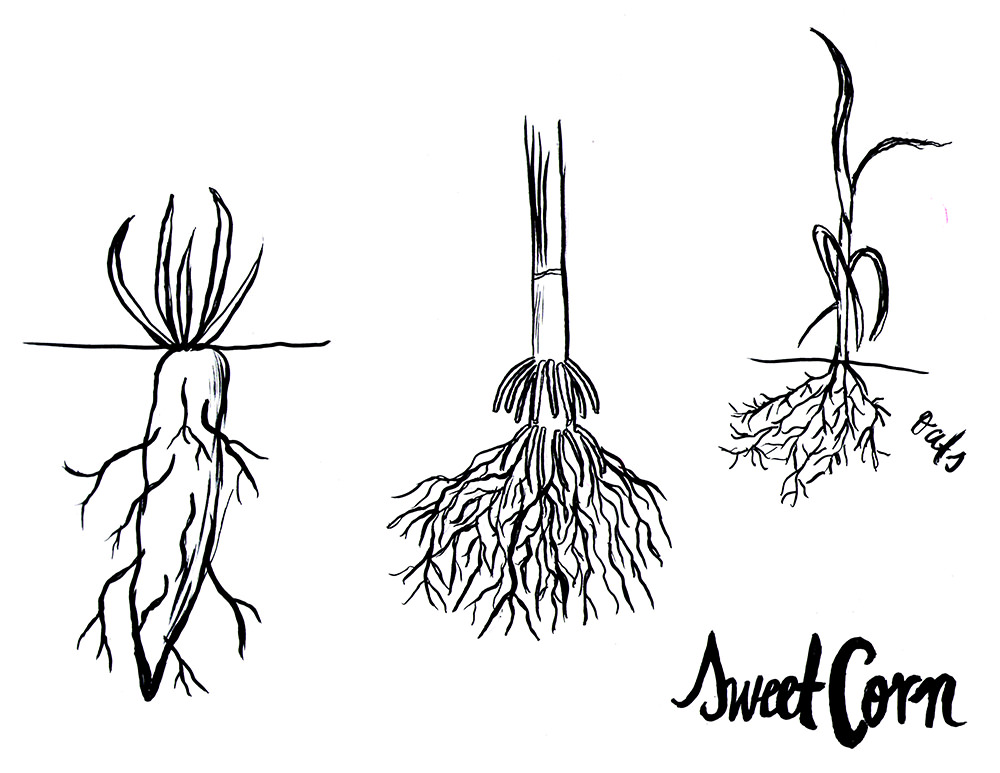
The short of it: immigration/migration isn’t new, not for human beings, not for any species. It has played an instrumental role in how we’ve developed, advanced, and exchanged/expanded ideas. In our conversations of local vs global, it’s easy to take for granted how the two are interdependent, how technology has advanced along our trading lines, how language has evolved and literacy has spread, how on one dinner plate we may have chicken that was first domesticated in China, potatoes that were first farmed in Peru, and corn in Mexico.
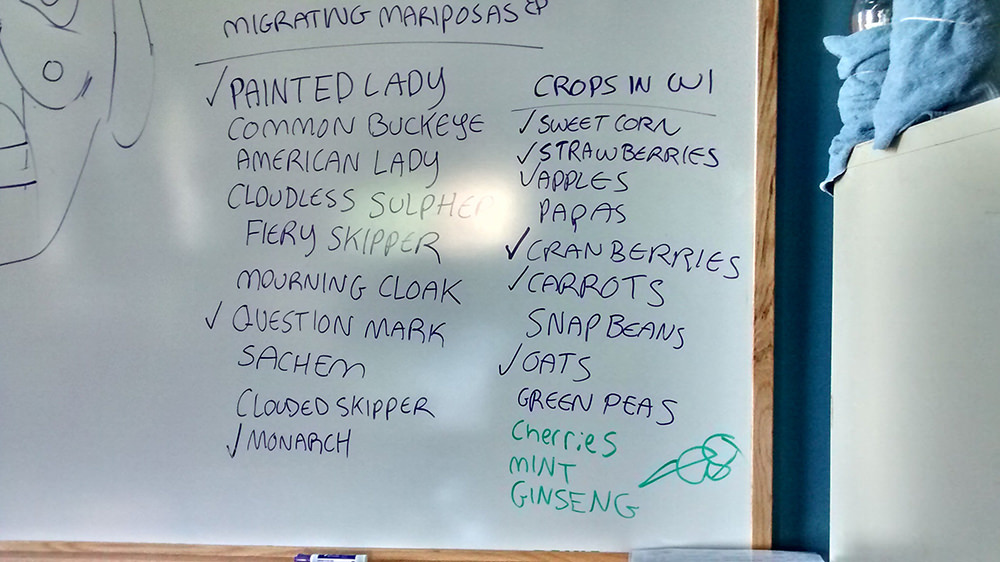
So where does the art come in? It was important for us to emphasize a couple things here. First, that art has always been a mirror for the current times, and a leader/indicator for where society will go next. Second, that the imagery needed to come from the students, facilitated by the instructors. The purpose of Escuela Verde’s project-based learning structure is to empower youth in the decision-making process and to build applicable skills. A project of this size would require lots of organization, clear direction, and strong problem-solving.

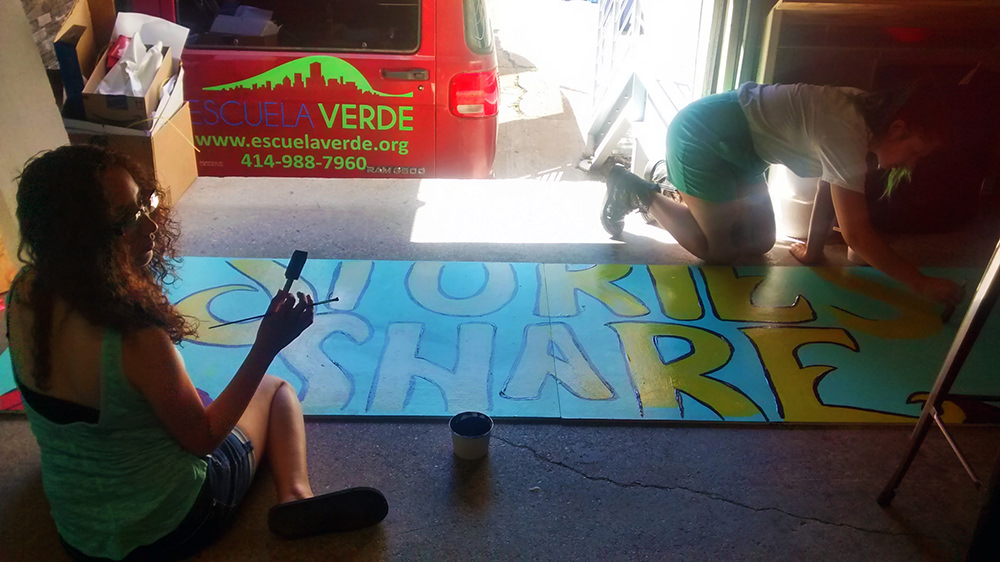
Our art workshops included the following: the history of arts and activism, image composition and drawing from observation, typography, games designed to make us think creatively and quickly on our feet, and communicating the ideas and metaphors of a story in images. It was a lot to pack into two months (and we needed the last two weeks for preparing materials and painting), and if there’s anything I could change, it’d be to have more time to explore each of these subjects more in-depth. But in this line of work, we work with what we’ve got, and we do our damnedest with it.

The butterfly became an important symbol for us, in a number of ways. Socially speaking, the monarch butterfly has already come to be a symbol of many social movements, representing migration and solidarity. Their migration patterns are known to play a role in many earthly phenomenons. The time at which a butterfly flaps its wings can determine whether or not a hurricane happens on the other side of the world, which ties us to our other important symbolism, and the purpose of the arts. One problem we are fighting in our communities is that of compartmentalism. Think about companies whose departments are siloed–unaware and therefore indifferent to how they affect one another. The result is low accountability and high blame in our organizations, and a toxic culture where people feel disconnected and purposeless in their work and livelihoods. Our siloed workplaces reflect our segregated neighborhoods. The health of our ecosystems reflects the health of our economies.

And us? We are artists working for and with a cause, who believe that creativity and logic are partners, that our ideals can be used to map our pragmatism and our realities. Our art is not just pretty–it’s smart. Our workshops went beyond aesthetics and embodied an understanding of math, science, and economics. Just as we found patterns in our shared migration stories, we studied fractals and tessellations, to identify the visual patterns in plant roots, butterfly wings, and the circulatory systems of our bodies.

So when you visit our mural in Milwaukee, I ask you to do so with an open hand. Look at your palm and the pattern of your veins. Look at how your fingers branch out from your hand and your limbs from your body. Think about the veins of a plant leaf, on a branch, on a tree. Learn to see this pattern, this shared, repeated pattern, that creates all the diversity we see.
I’ve reflected quite a bit in the aftermath of this project. As the second generation in an immigrant family myself, I feel lucky to have a dual perspective, of history, tradition, and my roots, and of the future and hopes for opportunity that drive all of us to move and embrace change. And whether we are the first in our families to grow up in this country or four generations in Wisconsin, all of us share this desire to trace back to where we come from, to understand where we belong, to feel at home where we are, and to find out where we are going.
Want to know more about our mural? You’re in luck. I’m a borderline insane documenter, and you can visit MigrationStory.US to learn about our full backstories, our workshops, the logistics of the painting/installation days, and the costs/pros/cons of the materials we used.


